This pub is closed permanently. Your nearest Wetherspoon pub: The Perkin Warbeck
Since medieval times, Taunton flourished as a market town. Its prominence in the cloth trade was also established early on. From the town’s first fulling mill (recorded in 1218) and for 500 years, looms and fulling mills (driven by the Tone) were one of the chief sources of employment. In the 18th century, improvements to the Tone made it easier for boats to reach Coal Orchard by the Tone Bridge. Today, Coal Orchard car park recalls this important trading place, opposite North Town Wharf, which stood just behind this pub.
Illustrations and text about historical buildings in Taunton.
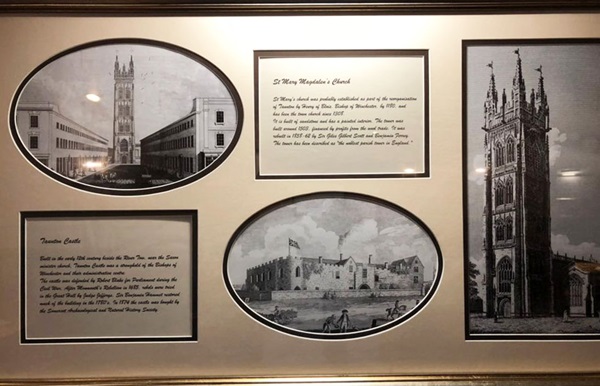
The text reads: St Mary Magdalen’s Church
St Mary’s Church was probably established as part of the reorganisation of Taunton by Henry of Blois, Bishop of Winchester, by 1180, and has been the town church since 1308.
It is built of sandstone and has a painted interior. The tower was built around 1503, financed by profits from the wool trade. It was rebuilt in 1858-62 by Sir Giles Gilbert Scott and Benjamin Ferrey. The tower has been described as “the noblest parish tower in England”.
Taunton Castle
Built in the early 12th century beside the River Tow, near the Saxon minister church, Taunton Castle was a stronghold of the Bishops of Winchester and their administrative centre.
The castle was defended by Robert Blake for parliament during the Civil War. After Monmouth’s Rebellion in 1685, rebels were tried in the Great Hall by Judge Jefferys. Sir Benjamin Hammet restored much of the building in the 1780s. In 1874 the castle was bought by the Somerset Archaeological and Natural History Society.
Photographs and text about businesses in the area.
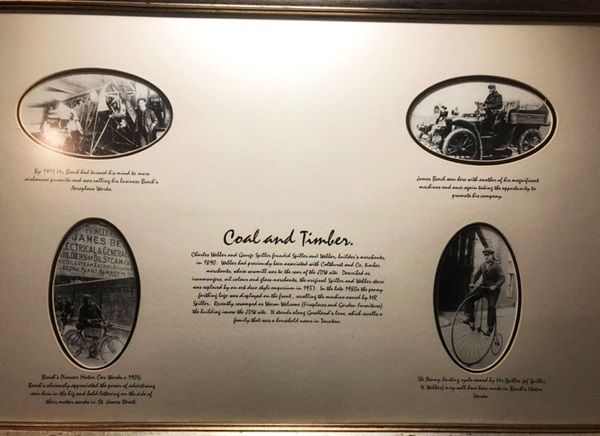
The text reads: Charles Webber and George Spiller founded Spiller and Webber, builder’s merchants, in 1890. Webber had previously been associated with Cothhurst and Co., timber merchants, whose sawmill was to the rear of this JDW site. Described as ironmongers, oil colour and glass merchants, the original Spiller and Webber store was replaced by an art deco emporium in 1937. In the late 1980s the penny farthing logo was displayed on the front, recalling the machine owned by MR Spiller. Recently revamped as Warm Welcome (Fireplaces and Garden Furniture) the building is now the JDW site. It stands along Goodland’s Lane, which recalls a family that was a household name in Taunton.


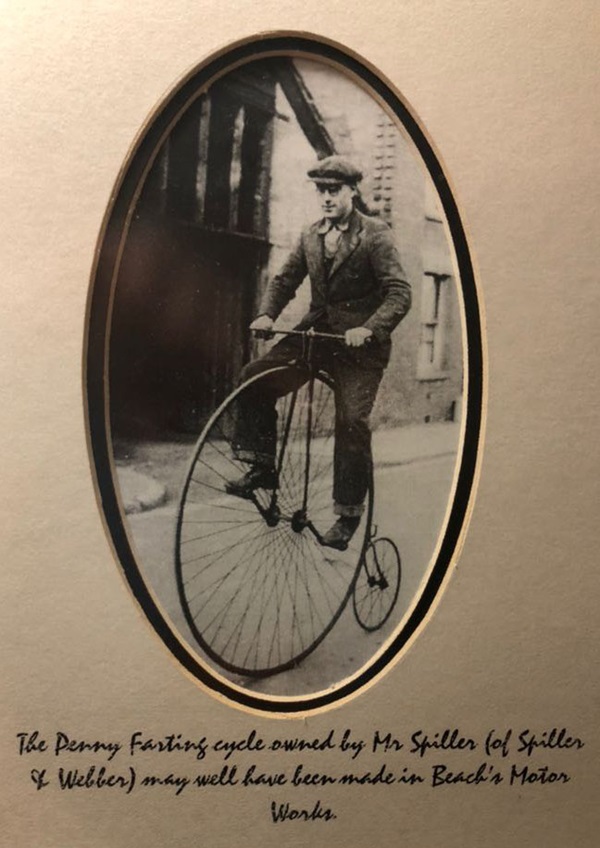

Top left: By 1911 Mr Beach had turned his mind to more airborne pursuits and was calling his business Beach’s Aeroplane Works.
Top right: James Beach seen here with another of his magnificent machines and once again taking the opportunity to promote his company.
Bottom right: The penny farthing cycle owned by Mr Spiller (of Spiller & Webber) may well have been made in Beach’s Motor Works.
Bottom left: Beach’s Pioneer Motor Car Works, c1904. Beach obviously appreciated the power of adverting seen here in the big and bold lettering on the side of their motor works in St James Street.
A photograph (from the south side) of Tone Bridge, Taunton, c1950.
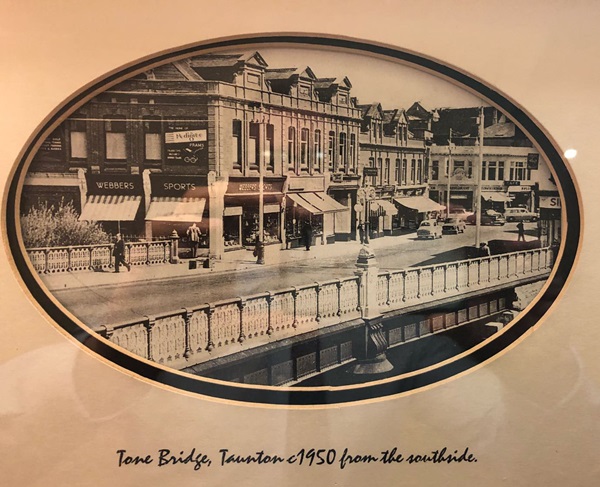
External photograph of the building – main entrance.
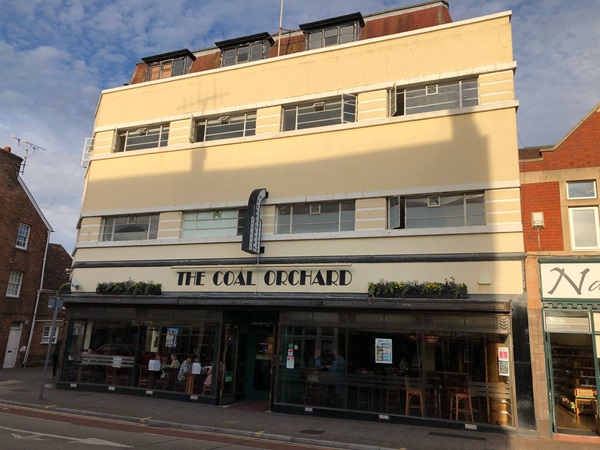
If you have information on the history of this pub, then we’d like you to share it with us. Please e-mail all information to: pubhistories@jdwetherspoon.co.uk